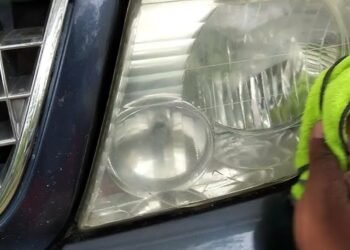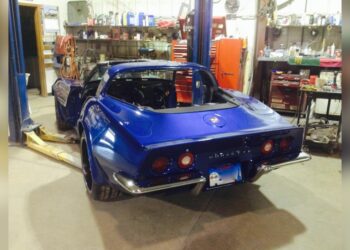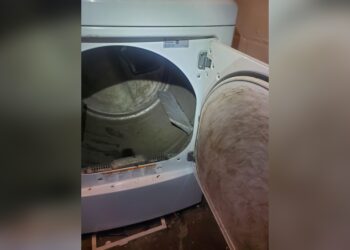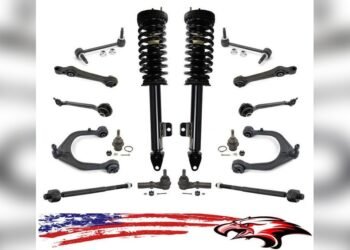If you own an RV, protecting its roof is probably one of your top concerns. You might have heard about RV Armor as a popular solution to keep your roof safe and leak-free.
But what about the complaints? Are there hidden issues you should know before investing in an RV Armor roof? You’ll discover the common problems reported by RV owners, helping you make an informed decision. By understanding these concerns upfront, you can avoid costly mistakes and keep your RV in great shape for your next adventure.
Keep reading to learn the truth behind RV Armor roof complaints and what you can do to protect your investment.

Credit: rv-armor.com
Common Complaints
Many RV owners have shared their experiences with RV Armor roofs. Some common complaints arise repeatedly. These issues help potential buyers understand what to expect. They cover durability, installation, and customer service.
Durability Issues
Some users report that the RV Armor roof shows signs of wear sooner than expected. Cracks and peeling have been mentioned after a few seasons. Exposure to harsh weather may reduce the roof’s lifespan. A few owners found that the coating did not fully protect against leaks. These problems can lead to costly repairs.
Installation Problems
Improper installation is another frequent complaint. Some RV owners say the roof was not evenly applied. Uneven layers can cause weak spots and water pooling. Delays in the installation process have frustrated customers. A few reports mention poor surface preparation before coating. These mistakes affect the roof’s performance and durability.
Customer Service Feedback
Customer support responses vary widely among RV Armor users. Some praise quick and helpful replies. Others feel their issues were ignored or handled slowly. Warranty claims sometimes cause confusion or delays. Clear communication is often missing during problem resolution. Good customer service is crucial for lasting satisfaction.
Cost Factors
The cost of an RV Armor roof depends on many details. Understanding these helps set the right budget. Price differences often cause complaints and confusion.
Knowing what affects the price makes it easier to compare options. It also helps avoid surprises during payment.
Pricing Models
RV Armor roofs usually charge by the length of the RV. This is called linear foot pricing. It is different from square footage pricing used in other roofing jobs.
Because of this, longer RVs cost more. The pricing model does not always match the roof area exactly. This can lead to higher prices for some shapes.
Material And Labor Costs
The price includes materials and labor. The material is a special protective coating for the roof. Labor covers the work done to apply the product correctly.
If the roof needs repairs or cleaning before the armor, costs go up. Skilled labor is key for a good finish and long roof life.
Additional Feature Charges
Extra features add to the total cost. Items like skylights, antennas, or large slide-outs require more work. These parts need careful sealing and can increase material use.
Adding these features means installers spend more time and resources. Expect extra charges for any custom roof elements.
Location Impact
Where you get the RV Armor roof affects the price. Labor rates and material costs differ by region. Some areas have higher business costs or less competition.
Travel distance for installers may also increase fees. Local demand and supply can influence final pricing. Checking prices in your area helps avoid overpaying.
What Price Includes
The price of an RV Armor roof includes several key components. These cover the full process of applying the protective coating. Understanding what you pay for helps you judge if the cost is fair. It also prepares you for what to expect during installation. Below are the main parts included in the price.
Labor
Labor covers the work done by professionals to install the roof coating. Skilled technicians clean and prepare the roof surface first. They then spray or roll the RV Armor material evenly. Proper labor ensures the coating lasts and protects well. This part of the price covers time and effort spent on your RV.
Materials
The cost includes all the materials used for the coating job. This mainly means the RV Armor product itself. It is a special liquid rubber that seals and protects the roof. Additional supplies like primers, cleaners, and tools may also be included. Quality materials are important for a durable and weather-resistant finish.
Warranty Coverage
The price often comes with warranty coverage for the roof coating. Many installers offer a lifetime or long-term warranty on their work. This warranty protects you against defects or early wear. It gives peace of mind that the coating will perform as promised. Warranty terms vary, so check the details before buying.
Sealant Options
Choosing the right sealant for your RV Armor roof is crucial for long-lasting protection. Sealants keep water out and prevent leaks. They also protect against weather damage. Different sealants suit different roof materials and conditions. Understanding sealant options helps avoid common RV Armor roof complaints. Below are key sealant choices and their best uses.
Top Sealant Choices
Silicone sealants offer excellent flexibility and water resistance. They work well on metal and rubber roofs. Polyurethane sealants provide strong adhesion and durability. These are ideal for RVs with heavy wear and tear. Butyl sealants are easy to apply and have good waterproofing. They are popular for temporary fixes and small cracks. Acrylic sealants dry fast and resist UV rays well. Use them for repainting or minor repairs.
Best Uses For Each Sealant
Use silicone sealant around vents and seams to prevent leaks. Polyurethane sealants suit roof edges and joints exposed to stress. Butyl sealants work best for patching cracks or sealing screw heads. Acrylic sealants fit smooth surfaces that need a neat finish. Match the sealant to the roof material for best results. Proper application lengthens your roof’s life and reduces complaints.
Sealant Compatibility
Check compatibility between sealant and roof coating before applying. Silicone sealants may not stick well to some painted surfaces. Polyurethane sealants bond strongly to most RV roof materials. Butyl sealants can sometimes break down under intense sunlight. Acrylic sealants work best on surfaces primed for paint. Always read product labels and test a small area first. Using compatible sealants prevents peeling and water damage.
Choosing The Right Roof
Selecting the correct roof for your RV is essential to avoid common complaints. A good roof protects your vehicle from weather damage. It also extends the life of your RV. Many problems arise from poor choices in materials or installation methods. Understanding the options helps you pick the best fit for your needs.
Consider how each roof type performs under different conditions. Think about durability, maintenance, and cost. A well-chosen roof reduces future repairs and keeps you safe on the road.
Roof Material Types
RV roofs come in several materials such as rubber, fiberglass, and aluminum. Rubber roofs are flexible and easy to repair but may need regular maintenance. Fiberglass offers a hard, durable surface but can crack in extreme weather. Aluminum is lightweight and strong but may dent more easily. Choose a material that fits your travel style and climate.
Surface Preparation
Proper surface preparation is key to a long-lasting roof. Clean the roof thoroughly before applying any coating. Remove dirt, old sealants, and debris. Smooth out any rough spots and fix leaks first. A clean, dry surface ensures better adhesion and prevents future problems. Skipping this step often leads to peeling and roof failure.
Application Techniques
Applying the roof material correctly affects its performance. Use even coats and follow manufacturer instructions. Avoid rushing the job to prevent bubbles or gaps. Some products require multiple layers or specific drying times. Hiring a professional can ensure proper application and avoid common errors. Good technique helps the roof last longer and stay watertight.
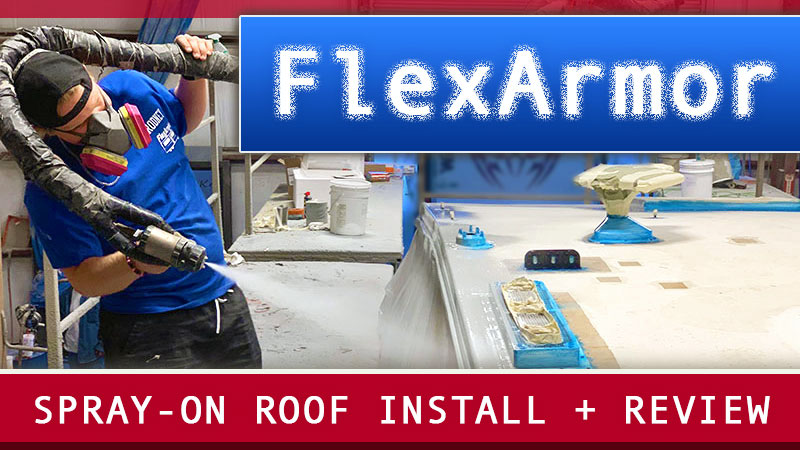
Credit: www.truckcampermagazine.com
User Reviews
User reviews offer valuable insights into RV Armor roof performance. They reflect real experiences from owners who have installed the product. These reviews help potential buyers understand strengths and weaknesses. They also share practical tips for maintenance and care. Below are some common points gathered from user feedback.
Positive Experiences
Many users praise RV Armor for its durability and protection. The coating resists cracks and leaks in harsh weather. Several owners mention a noticeable reduction in roof maintenance. The product often extends the life of older RV roofs. Customers appreciate the lifetime warranty that comes with installation. Easy cleanup and a smooth finish also receive positive remarks. Some report better energy efficiency due to improved insulation.
Negative Feedback
Some users report issues with the application process. Poor preparation of the roof can lead to peeling or bubbling. A few owners faced delays or higher costs than expected. Certain reviews mention dissatisfaction with customer service. A small number noted that the coating can fade over time. Some RV owners felt the product was not as flexible on extremely curved roofs. These complaints highlight the importance of professional installation.
Tips From Owners
Owners suggest thorough roof cleaning before applying RV Armor. Removing old sealant and debris improves adhesion. They recommend hiring experienced installers to avoid common problems. Checking the roof for damage before coating saves money later. Some advise regular inspections to catch any wear early. Using the product in dry weather ensures better results. Following the manufacturer’s maintenance guidelines helps maintain roof integrity.
Maintenance Tips
Proper maintenance helps extend the life of your RV Armor roof. It prevents common problems and keeps the roof strong. Simple care routines can stop damage early. Follow these easy tips to protect your investment and avoid costly repairs.
Regular Inspection
Check the RV Armor roof often for cracks or tears. Look closely around vents, seams, and edges. Early spotting of damage helps fix small issues fast. Use a flashlight to see hard-to-reach areas. Note any changes or wear you find during inspections.
Cleaning Recommendations
Keep the roof clean from dirt, leaves, and debris. Use mild soap and water with a soft brush or cloth. Avoid harsh chemicals that may harm the coating. Rinse thoroughly to remove all soap residue. Clean the roof at least twice a year for best results.
Repair Strategies
Fix small cracks or holes quickly with a patch kit made for RV Armor. Follow the instructions carefully for a tight seal. Replace any damaged parts like vents or seals as needed. For larger damage, consult a professional to ensure proper repair. Timely repairs prevent leaks and further damage.

Credit: www.trustindex.io
Frequently Asked Questions
How Much Does Rv Armor Cost Per Square Foot?
RV Armor typically costs between $6 and $10 per square foot. Prices vary by RV size, roof condition, and location. The cost includes professional labor, materials, and often a transferable lifetime warranty. Larger RVs or complex roofs may increase the price.
What Is Rv Armor Roof Coating?
RV Armor roof coating is a durable, spray-applied protective layer for RV roofs. It seals leaks, prevents damage, and extends roof life.
What’s The Best Rv Roof Sealant?
The best RV roof sealant depends on your roof type. Dicor Self-Leveling Lap Sealant suits EPDM roofs. Geocel Pro Flex offers flexibility for penetrations. RV Roof Magic provides durable, liquid butyl rubber protection. Choose based on roof material and sealant flexibility needs.
What Is The Difference Between Rv Armor And Flex Armour?
RV Armor is a durable, liquid-applied RV roof coating with a lifetime warranty. Flex Armor offers a flexible, spray-on sealant designed for easy roof repairs and protection.
Conclusion
RV Armor roof complaints highlight important issues to consider. Some users report durability and application challenges. Costs vary depending on RV size and roof condition. Proper installation and maintenance improve roof lifespan. Always research thoroughly before choosing RV Armor roofing.
Understanding these factors helps you make an informed decision. Choose a solution that fits your needs and budget. Stay aware of potential problems to avoid surprises. Your RV’s roof protects your investment—choose wisely.


